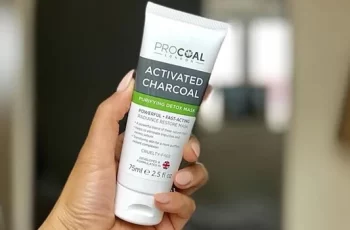
Can You Use Salicylic Acid After Microdermabrasion?
If you have had microdermabrasion before, you will know the full benefits for the skin and the overall improved look and feel. With such a highly effective treatment, the question we are left with is, can we use our normal skincare routine after microdermabrasion? Will salicylic acid help or hinder the results for the complexion? Are there huge no-no’s to using these potent powerhouses together? This is exactly what we plan to explore in today’s blog post, so stick around if you wanted to get to the bottom of things.
Before we start our investigation, let me explain what microdermabrasion is and how it works on the skin. If you are already familiar with how this treatment benefits the skin, you can skip to the next part.
What is microdermabrasion?
Microdermabrasion is a cosmetic treatment that involves fine crystals providing deep exfoliation
The vacuum device of the machine can remove dead skin cells from the top layers of the skin
Visibly improved complexion with fine lines and wrinkles significantly reduced
Signs of dark spots and hyperpigmentation improved with pigmentation appearing brighter with an even finish to the skin
Microdermabrasion can be used on the face, neck, hands, chest and back.
Skin texture is improved with an all-over smoother, younger, even looking complexion
There you have a few examples of what microdermabrasion does for the skin and the benefits you can expect to see. Finding a salon or spa that performs this treatment is an easy task as it is one of the most popular cosmetic procedures available.
How long after microdermabrasion can I use salicylic acid?
Do not use any form of exfoliation on the skin after for microdermabrasion for at least three days after your treatment. This could be in the form of physical scrubs containing pieces of nut shells, as well as chemical exfoliation, such as salicylic acid and other acids.
Due to the deep exfoliation revealing brand new skin, increased sensitivity exposes the skin to become easily irritated. Therefore, it’s thought best to avoid any further exfoliation whilst your skin heals.
Other skin ingredients to avoid using during your healing stage are,
Glycolic Acid
Retinol
Benzoyl Peroxide
Topical Acne Treatments
After waiting for 72 hours, you can reintroduce your skincare products containing these ingredients back into your routine. Ideally, this should be performed as a staggered routine starting by only using one product enriched with a potent ingredient. By doing this you are keeping your skin healthy without causing it to become overly dry and irritated. Follow any skincare products containing the mentioned ingredients with a formula that is hydrating and packed with actives, such as hyaluronic acid and niacinamide. Each of these ingredients act as humectants meaning they can lock moisturise into the skin and keep it hydrated with the skin barrier strengthened.
What should you not do after microdermabrasion?
There are a few does and don’ts when it comes to the aftercare of microdermabrasion. Here are the main factors that should be avoided.
Don’t forget to moisturise more
Microdermabrasion is one of the most effective treatments with the quickest results. After your treatment you will instantly see an improvement of your skin. Many users exclaim how they can’t believe the softness of their skin after just one treatment, this is something that can easily be maintained by applying liberal layers of moisturiser. Be sure that you opt for a water-based formula packed with hyaluronic acid to keep the skin plumped, glowing, and healthy. You will also find that any signs of flaky, dry areas of skin are reduced, and the skin is left comfortable and the skin barrier at its healthiest, strongest state.
Don’t forget your SPF
For the first 3 days after your appointment, it is advisable to avoid touching and cleansing the skin and ideally, you should avoid any exposure to direct sunlight. Once these days have passed, it is of the highest importance you apply a daily SPF of 30 and above. This will ensure all the hard work of the microdermabrasion is not altered and you have full protection from free radicals, such as UV light, pollution, central heating, and other environmental aggressors.
Do not work out
If you were after a good excuse to skip the gym for a few days, then microdermabrasion is the answer. As I have mentioned, your skin’s sensitivity is increased so avoid heavy workouts that will result in you sweating profusely. This will prevent any sweat from reacting to the skin and causing irritation.
Avoid caffeine
I understand how the thought of not having your morning tea or coffee sounds like an absolute nightmare. The trouble is caffeine is very dehydrating for the skin, especially after a treatment that performs such as deep exfoliation. The easiest way to counteract this is to remember to consume the same amount of water as you do caffeine.
There you have some examples of the main factors you need to avoid, including the exfoliation I mentioned in the previous section. If you have any concerns with your aftercare post microdermabrasion, consult with your doctor or the trained professional who performed the procedure for more advice.
Can I use BHA after microdermabrasion?
No, it is best to avoid any form of BHA after microdermabrasion. The new skin layer on the surface of the face is highly sensitive and suspectable to long term damage if exposed to any form of exfoliation, this will cause the skin to become red, irritated, and uncomfortable. You will also find your natural protective barrier will become weakened and lacking in the vital oil and water needed to function correctly. This will result in all manner of skin concerns and problems, from redness, signs of premature ageing, and hyperpigmentation.
How do you treat acne after microdermabrasion?
If you are starting a course of microdermabrasion to treat your acne, you may need to prepare yourself from more breakouts before you reach your skin goals. Many find that their acne can worsen after the first treatment, but don’t panic, as this is all part of the process.
The way microdermabrasion exfoliates the skin is by stimulating the skin cycle, sloughing away the build-up of dead skin cells and unclogging the pores of deep-rooted impurities, such as bacteria, debris, excess sebum, and dirt. All of this can lead to something known as purging when all the “gunk” in the skin is drawn to the surface of the skin. As disheartening as it may feel, this won’t last forever and after a couple more sessions of microdermabrasion, you will be left with the best skin you’ve ever had!
How long after microdermabrasion can I use retinol?
You need to avoid using retinol for at least three days after microdermabrasion. With retinol performing on the face in a similar way to the treatment, you’ll find this will be too much for the skin and you will be left with a flare up of acne, redness, breakouts, and other skin concerns. Once the skin has healed and settled, you can then reintroduce retinol into your routine with the peace of mind you won’t damage the skin.
I hope that this has answered some of your questions you had about using salicylic acid after microdermabrasion. Don’t forget, if you have any further questions, you can come and follow us on Instagram.


